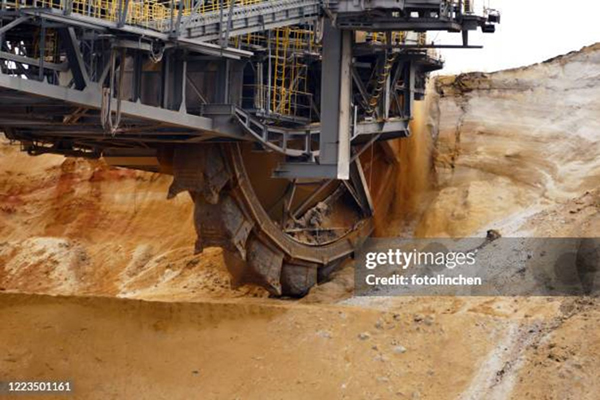A couple of months ago, I issued a recommendation to my paid readers focusing on a mining service play.
In fairness to those readers, I won’t share the name of that stock here.
However, I can provide the background intel that led me to this recommendation.
It relates directly to my former time as an exploration geologist. This occupational experience gives me an advantage over the ‘armchair’ mining analysts.
And one of the key points I’ve always emphasised since joining Fat Tail Investment Research is the difficulty of finding new deposits.
Take the Eastern Goldfields region of Western Australia…
Geologists and prospectors have been drilling, prodding, and kicking rocks in this area for over a century.
And in doing so, they’ve unearthed some giant deposits.
But the probability of making a brand-new greenfield discovery here is starting to wear thin.
That’s the common trend across these well-worn mining districts, where established regions are devoid of new discoveries.
So, where will the next generation of deposits come from?
I read an interesting piece from the US Geological Survey the other day. It was talking up the potential of mineral discovery in Afghanistan.
And no wonder!
Decades of conflict have kept this place out of reach.
But investors have about as much chance of making a buck from these frontier locations as they do throwing it into outer space!
And that’s exactly where some other experts believe future mineral supply will arrive…
Asteroid mining.
You might have heard of this concept. These extraterrestrial mountains of rock are brimming with rare minerals.
But in my mind, towing millions of tonnes of raw material back to Earth seems like a stretch.
Remember, we haven’t even put a single person on the moon in over 60 years!
So, the idea of ‘mining space’ is probably a little stretched for now.
Anyway, I was chatting to someone involved in space engineering here in Adelaide, a small hub for Australia’s fledging space industry.
According to him, ‘space mining’ is less about bringing resources back to Earth and more about having access to raw materials to build ‘space hubs.’
Like building a base on the Moon or Mars.
He agrees that extracting minerals for use on Earth is not economically feasible; the whole idea of space mining is to use those resources from afar.
That means even if space mining does happen eventually, it’s unlikely to add anything to our earthly needs.
So, where will the next generation of deposits come from?
From outer space to the deep ocean…
Deep-sea mining is another idea that has circulated over the last few years.
Some companies are looking to exploit the deep ocean by dredging for ‘polymetallic nodules.’
These are rich metallic ‘balls’ resting 6,000 meters on the ocean floor.
The nodules are rich sources of silver, gold, copper, manganese, cobalt, rare earths and zinc.
However, as it stands, 32 countries are firmly opposed to deep-sea mining.
That even includes mining jurisdictions like Canada and Brazil.
Not surprisingly, deep-sea mining is controversial… Dredging the ocean floor on an industrial scale is not exactly the sustainable future most want.
Especially given that the demand for many of these metals is tied to renewables and a so-called ‘greening-up’ of the global economy!
Meanwhile, Norway, one of the leading advocates for deep-sea mining, has just revoked all of its licenses.
Clearly, there’s a problem.
Think tanks, governments and scientists wouldn’t throw things like space mining or deep-sea extraction into the mix if they didn’t believe in a mineral supply issue.
Ideas that would have been lambasted a decade ago are now the subject of serious scientific and political debate.
But the solution might be much closer to home than they think…
Don’t Look Up… Look Below for Future Supply
Futuristic ideas like space mining or deep-sea extraction sound exciting.
But I think the future of mining will look much more like it did 100 or even 200 years ago!
Let me explain…
For the moment, extracting minerals usually involves a technique known as open-cut mining.
This is where the overlying ‘barren’ rock is removed to reach the mineralised rock below.
Essentially leaving a giant hole in the ground.
Traditionally, mines were like tunnels snaking their way below the surface, chasing rich veins or mineralised ‘seams.’
But in 1905, an engineer named John M. Sully figured it would be much cheaper to amalgamate all these underground ‘tunnels’ into one giant open pit.
Rather than chase high-grade seams, Sully deduced that miners were better off digging the whole lot up!
That would be far more cost-effective, even if a large portion of that rock were barren.
Open-cut mining is simple and can be undertaken on a larger scale with bigger machinery.
And thanks to Sully’s innovation, extraction costs fell dramatically.
Thus, the birth of modern mining took shape.
Mining suddenly transitioned from a small pick-and-shovel business to a machinery-driven industrial-scale enterprise.
A bit like this:
| |
| Source: Getty Images |
This new technique — crude as it was — boosted the supply of minerals and helped to support global industrial expansion.
And it also put places like Chile on the map as a new mining frontier.
A country that hosts a vast network of shallow low-grade copper-gold porphyry deposits, it was perfectly suited to Sully’s breakthrough mining technique.
Today, open-cut mining remains the primary method of extraction.
But as surface deposits deplete, mining will go deeper
Sully’s breakthrough ‘open-cut’ method led to a new mining method.
But more than a century later, this pioneering technique is losing out to falling grades.
Increasingly, open-cut mining is becoming a low-profit margin business.
For each tonne mined, producers are extracting less metal…and more useless rocks!
Ironically, that means mining economics is starting to shift in favour of underground operations.
In other words, a return to the old days of mining!
Shafts, adits, and chasing high-grade mineralization — the old mining pioneers will be very versed in the future of mining as it pivots back to extracting deep, high-grade deposits.
Benefiting from this trend
In my mind, untapped frontiers like Afghanistan aren’t going to open up any time soon.
And I don’t expect Elon Musk will be towing asteroids back to Earth either… His ambitions lie beyond this planet.
And in terms of destroying the ocean using deep-sea mining to reduce carbon dioxide in the atmosphere by 0.01%, well, that just doesn’t make sense to me.
That’s why I think the only viable solution is to go deeper… Underground.
So, how can you tap into this emerging trend?
Simple…
Consider adding mining service stocks specialised in underground mining to your watchlist.
There are a handful of service providers on the ASX.
If you’re interested in uncovering the stock I recommended to my paid readership group, you can do so here.
This Aussie service play is rapidly growing its international client base, servicing underground mines throughout Australia, Africa, and the Americas.
It’s a global leader in underground contracting.
Plus, as an added bonus…
No matter what commodity performs in 2025… Gold, silver, copper or zinc… This underground mining service provider is exposed to them all!
Until next time,
Regards,
 |
James Cooper,
Editor, Mining: Phase One and Diggers and Drillers



Comments